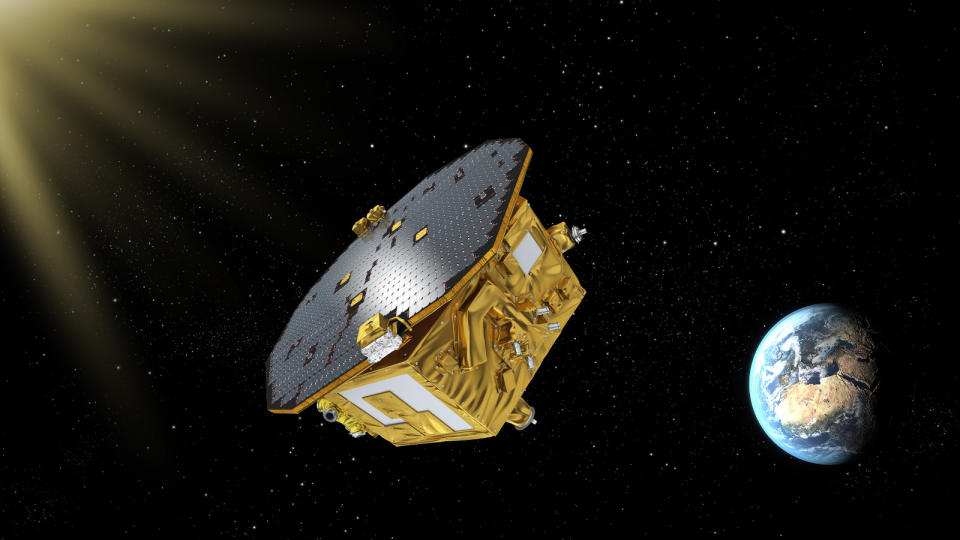The ESA's hunt for gravitational waves is over, for now
LISA is dead, long live LISA.
On July 18th, 2017 at around 2PM Eastern time, Professor Stefano Vitale sent the LISA Pathfinder its final kill commands from the mission's control center in Germany. The lead investigator's instructions prompted the probe to reboot itself and run a corrupted version of its software. That ensures that the spacecraft will harmlessly orbit the sun without colliding into other probes. Before the ESA powered down Pathfinder, though, it was able to meet and even exceed all the agency's objectives.
The mission was actually conjured up to test technologies the ESA plans to equip the Laser Interferometer Space Antenna or LISA, a constellation of three space observatories that will be capable of detecting gravitational waves. A few months after the test probe launched in 2015, it positioned itself at the first Lagrange Point, letting its two gold-platinum alloy cube instruments float in their cages while they freefall. Scientists can use those cubes as microphones to listen to the sounds of the universe.
Gravitational waves are typically described as ripples in spacetime. They have several possible sources, including the merging of black holes, supernovae and stars orbiting each other. In 2016, 100 years after Albert Einstein predicted their existence based on his theory of general relativity, researchers from Caltech's LIGO Lab were finally able to verify their presence.
The fact that it took a century to verify gravitational waves' existence proves they're pretty hard to detect. LISA will hunt for them by using six cubes -- two on each spacecraft linked to each other via lasers. We'll have to wait over 17 more years before seeing LISA's results, though, since it won't be heading to space until 2034.
At least the bigger mission's still a go: it was in jeopardy for a few years after NASA pulled out of its partnership with the ESA due to budgetary constraints. After much deliberation, and possibly thanks to Pathfinder's stellar performance, the European agency decided to go through with the project last month. NASA is also thinking of rejoining as a major partner.

[A computer render of LISA. Image credit: AEI/Milde Marketing/Exozet]




